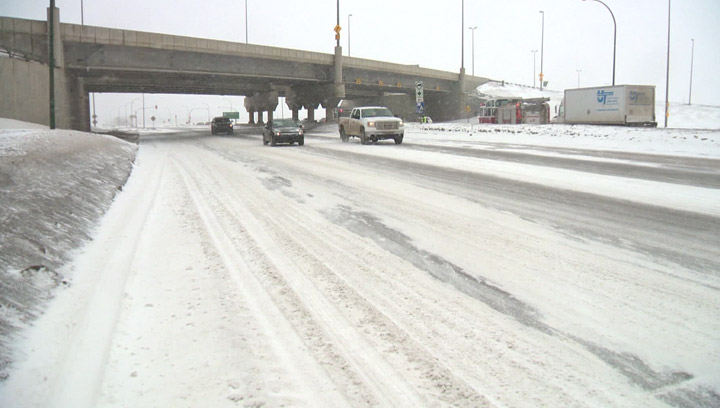Regina – Every winter almost half of Canadians will be driving on all-season tires. What most people don’t know is that these tend to freeze in the cold, slide in the slush and can take roughly 30 meters longer to stop on smooth ice. Experts recommend an all-weather tire because they meet the minimum safety requirements for driving in hazardous conditions.

Spokesperson for Kal Tire Geoff Wiebe said the best way to prepare for winter driving conditions is to equip your vehicle ahead of the season.
Here are five tips to keep you safe during winter driving:
1. Winter Tires
The best way to check your tires is to measure the tread depth. In order to do this properly take a tread depth gauge and place it right into the tire, ideally, the tread should be at 11/32 to 8/32, once it starts getting below 5/32 tread it’s time to think about investing in a new set of wheels. Wiebe also made mention that it is equally as important to check the tires air pressure; the sticker is located inside the vehicle door-jam indicating what the pressure should be at for all four tires.
2. Fluid Check
When the weather begins to change it’s time to switch out vehicle fluids. Due to the cold conditions the components under the hood such as clips begin to be malformed and leaks that normally wouldn’t be present in the summer may show up in the winter. Having a routine oil change, switching to a winter washer fluid and just making sure all fluids are topped off will help to prevent these issues.
- RCMP arrests alleged hitmen accused of killing B.C. Sikh leader
- Fall COVID-19 vaccine guidelines are out. Here’s what NACI recommends
- Some 2019 candidates ‘appeared willing’ to engage with foreign interference: Hogue inquiry
- Thousands of Canada’s rail workers have a strike mandate. What happens now?
3. Wipers
It’s recommended that windshield wipers be replaced every six-months. If the wiper starts to tear or scrape the windshield it’s time to replace them. Wiebe said they will begin to obstruct the drivers vision if they are not changed out.
4. Winter Survival Kit
According to Saskatchewan’s Canadian Automobile Association (CAA) one of the most important things to have in a vehicle is a survival kit. These can be pre purchased at various stores and include items such as a flashlight, blanket and flares. Christine Niemczyk from CAA suggests packing extra clothes for you and your passenger in case of an accident. She also added that having a full charged phone and charger will be of great benefit to call for help or roadside assistance – 1-800-222-4357 in case of an emergency.
5. Highway Hotline
Be sure to check outlets online before heading out onto the commute — this will allow for extra time in case of an unforeseen incident. But, the Government of Saskatchewan also offers the Highway Hotline… As the winter season approaches the Ministry will offer a 24/7 service with the most up-to-date information on highway conditions.



Comments